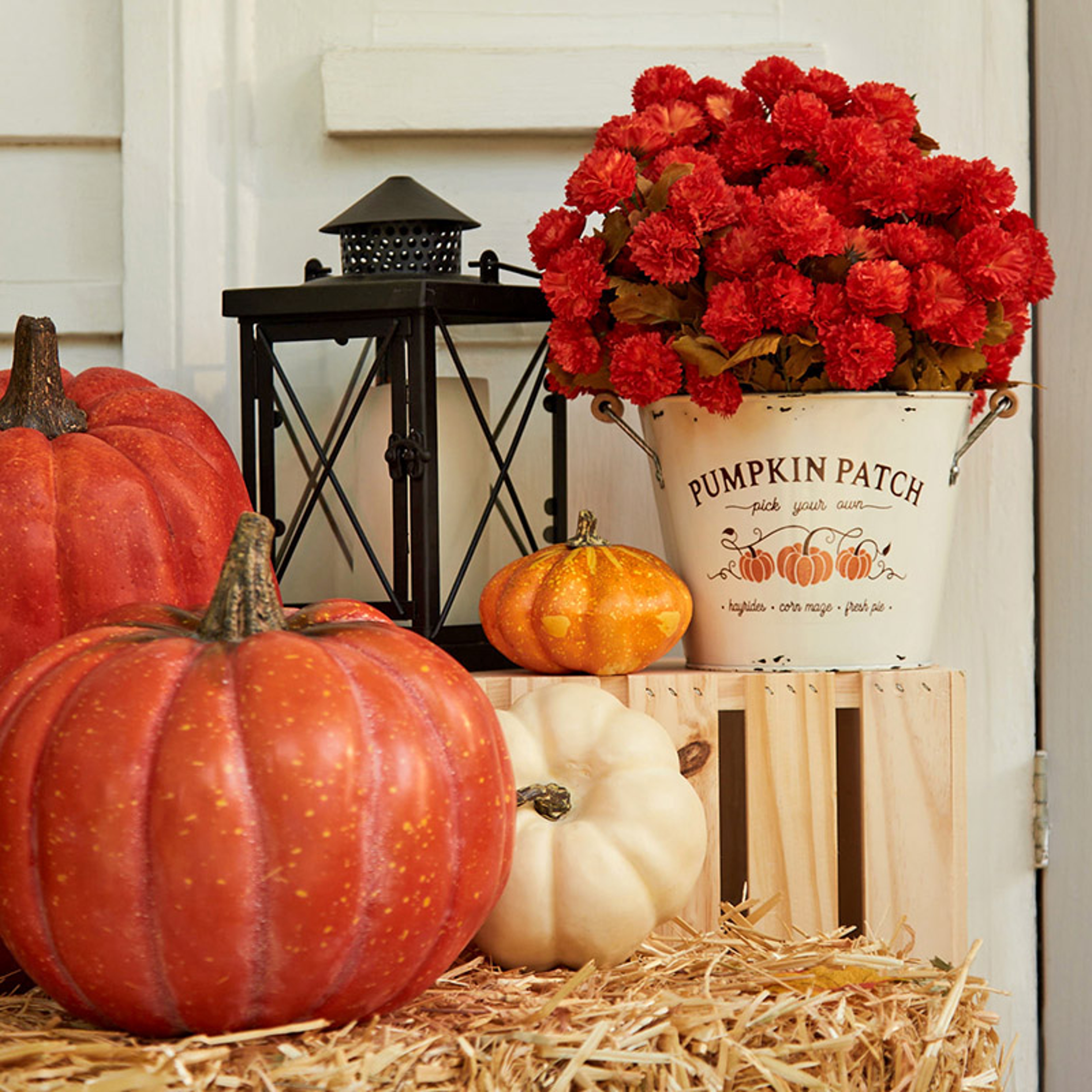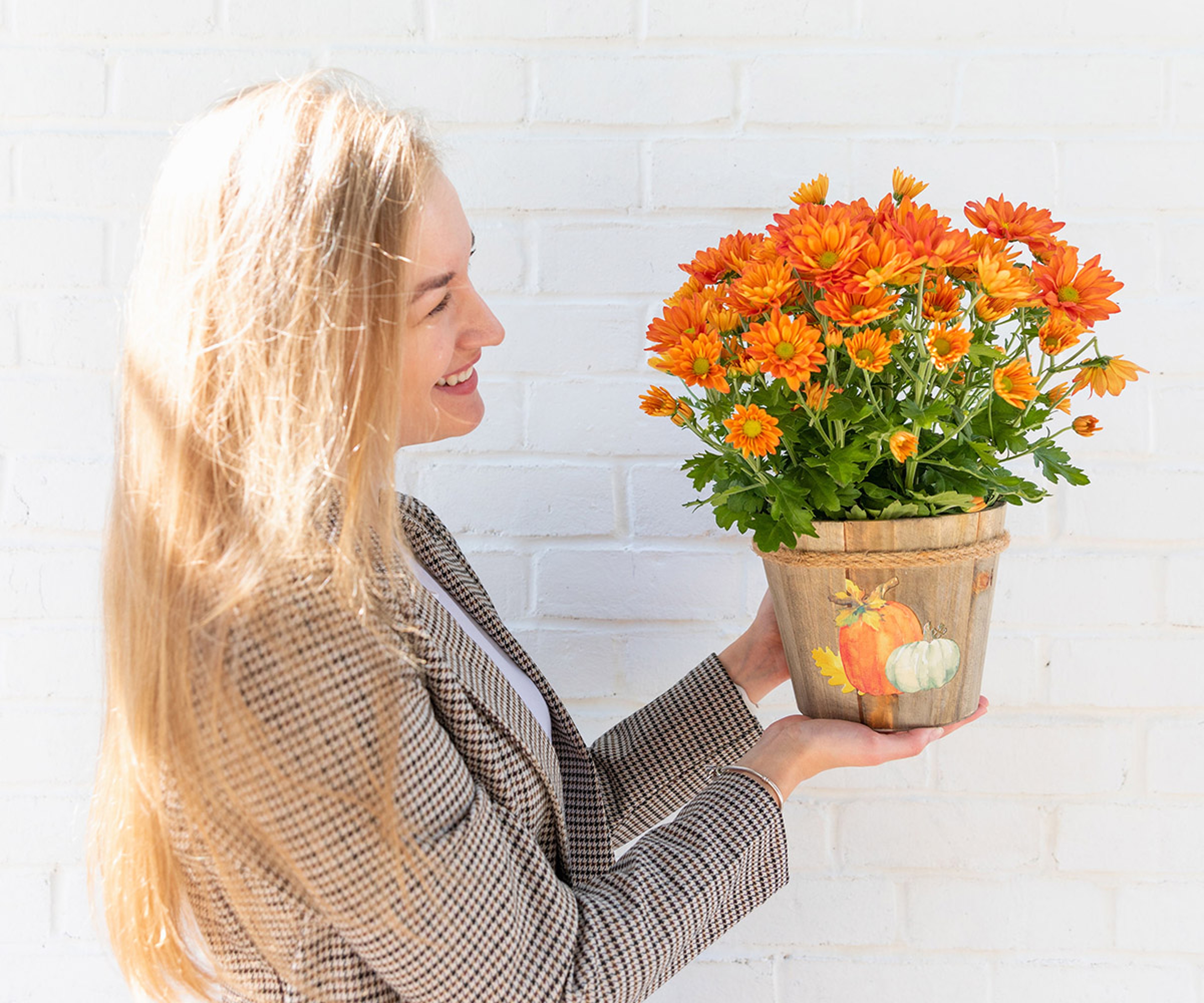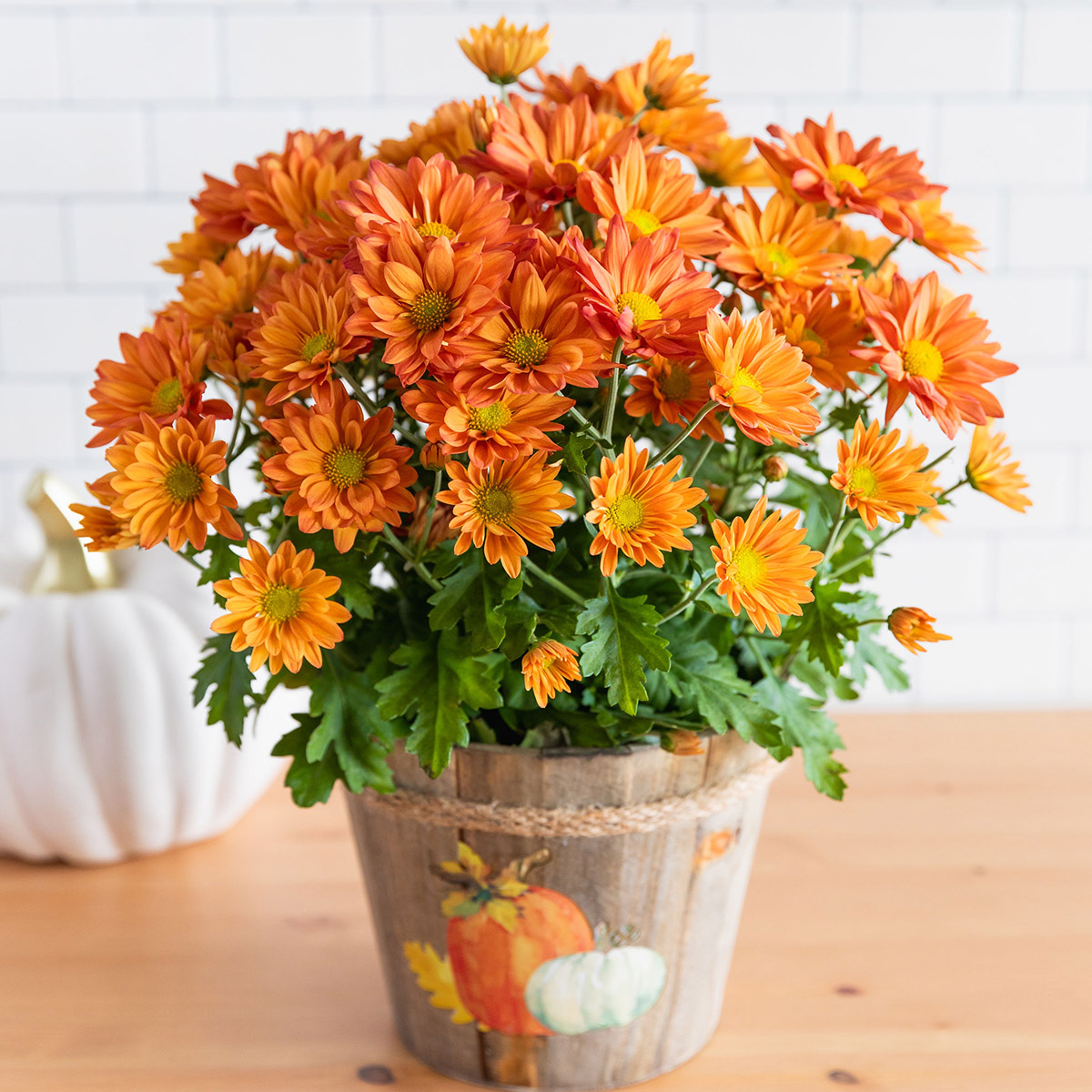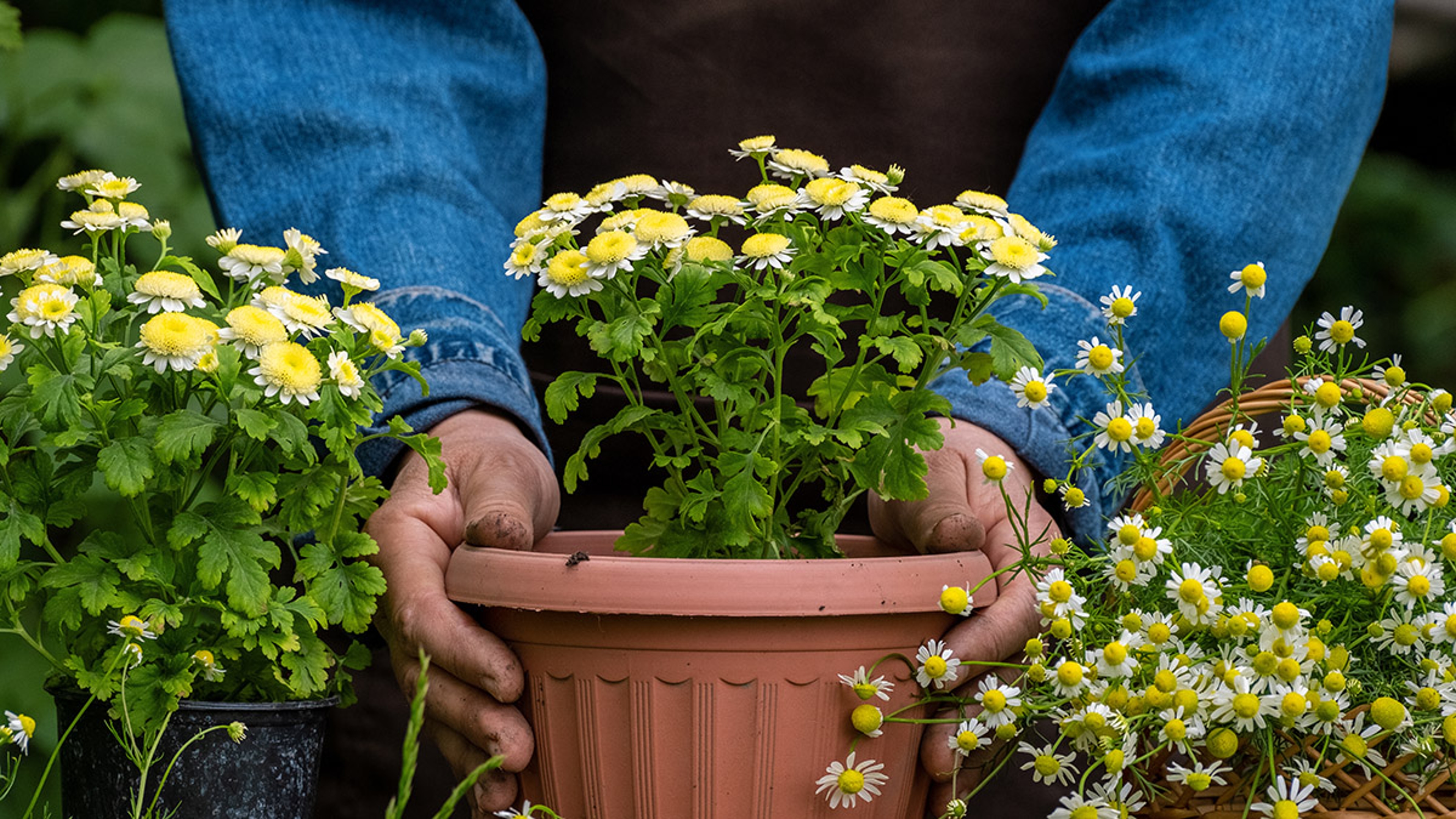How to Care for Mums
Learning how to take care of this popular fall plant is at least easier than trying to spell its full name.
Oct 06, 2022
As days grow shorter and temperatures drop, and many types of flowers begin to fade, chrysanthemums can bring a bright burst of warm color to a fall garden.

Around 40 species of chrysanthemums — commonly referred to as "mums" — exist in the wild. These herbaceous perennials or subshrubs, native to east Asia and northeastern Europe, are members of the daisy family and usually grow one to three feet tall. They have been cultivated and hybridized in China since the 15th century B.C., and are culturally important all over Asia.
Chrysanthemums were introduced to the Western world in the 17th century. Since then, thousands of varieties have been hybridized in Europe and the United States. The name chrysanthemum means "golden flower" in Greek and is also the scientific name of the plant. Followers of feng shui consider these plants a source of laughter and joy.
Here's a guide to how to care for mums, including tips on buying the right kind and growing your own.
Buying guide
Chrysanthemums put on a show from late summer until frost. They offer a wide range of flower shapes, sizes, and colors for in-ground planting, containers, or hanging pots. When choosing which chrysanthemums to buy, keep the following points in mind.

Florist mums vs. hardy mums
Attractive florist chrysanthemums — those usually sold in florist shops or indoors at garden centers or grocery stores — are not hardy and are best used in containers or as annuals in the garden. These mums have limited root systems and will not survive the winter.
Hardy mums have root systems that spread out underground, enabling them to withstand cold temperatures in the garden, especially if they are planted in the spring and can become established before winter rolls around. Buying hardy mums in the fall does not guarantee that they will make it through the winter; these are better treated as annuals. They are normally sold outside in garden centers, grocery stores, or farm stands. Checking the tag will reveal if they are being sold as annuals.
Hardiness zone
Chrysanthemums grow best in USDA hardiness zones 5 to 9.
Color
Mums come in white, pink, red, purple, bronze, orange, or yellow. Choose a color that will complement its surroundings.
Buds
If you are buying a mature plant, look for one that is mostly in bud. Chrysanthemum flowers will normally bloom from four to eight weeks, and buying a plant in bud will give you the longest time to enjoy the flowers.

Good branching and new growth
A plant with the most branching and new growth will produce the most flowers and give a full, healthy appearance. Avoid plants with broken branches or spent flowers.
Well watered
Choose a plant with firm leaves and upright flowers. Droopy plants with yellowed bottom leaves — a sign they have not been watered properly — may not grow successfully.
Pest and disease free
Inspect the plant thoroughly on both sides of the leaves for signs of insects, such as aphids or spider mites, and for diseases that cause curling, moldy, or yellow or mottled leaves. If something doesn't look right, don't buy it!
Tips on how to care for mums
Light
Chrysanthemums grow best in a sunny spot that is sheltered from the wind. They can grow in partial shade but will tend to be spindly and won't put out as many blooms as they would in full sun.
Soil
Mums are adaptable to many soil types as long as they are well draining. Organic soils or those amended with compost or peat, with a slightly acidic pH of 6.5, are best. Turn over the soil to a depth of 24 inches and mix with the organic material. Plant container-grown mums in a standard indoor potting mix.
Water
During dry weather, water hardy garden mums thoroughly down to the roots. Light watering keeps roots growing at a shallow depth, making them more susceptible to drying out and becoming damaged during the winter. Chrysanthemums grown in containers need to be watered more frequently than in-garden plants since their soil dries out quicker. Water them thoroughly when the soil is dry an inch down from the top, allowing the water to drain through the holes in the bottom of the pot. Both in-garden and container-grown plants should only be watered on the soil beneath the plants to avoid fungal diseases on the foliage.
Fertilizer
Chrysanthemums are heavy feeders, so mix some complete fertilizer, such as 10-10-10, into the soil at the time of planting in the spring and then again in midsummer. Fertilize fall-planted mums once at planting, and container-grown mums with an all-purpose liquid fertilizer twice a season.

Pruning
If you buy young plants in the spring, pinching them back once or twice during the season encourages them to be bushy, with lots of flowers. Pinch each stem back to the first leaf when the plants are about 6 inches high in the spring. After the stems grow 5 to 8 inches long, pinch them back again in midsummer for continued lateral branching. Plants bought in the late summer or fall should be well branched and won't need pruning, except for deadheading spent flowers.
Mulching
Apply a layer of mulch in late fall to protect in-garden plants during the winter months.
Pests and diseases
Watch for aphids, spider mites, caterpillars, leafhoppers, and plant bugs on the leaves. If the plants are crowded together without much air circulation in shady, humid conditions, they are prone to fungal diseases, such as powdery mildew, botrytis blight, leaf spot, and fusarium wilt.










